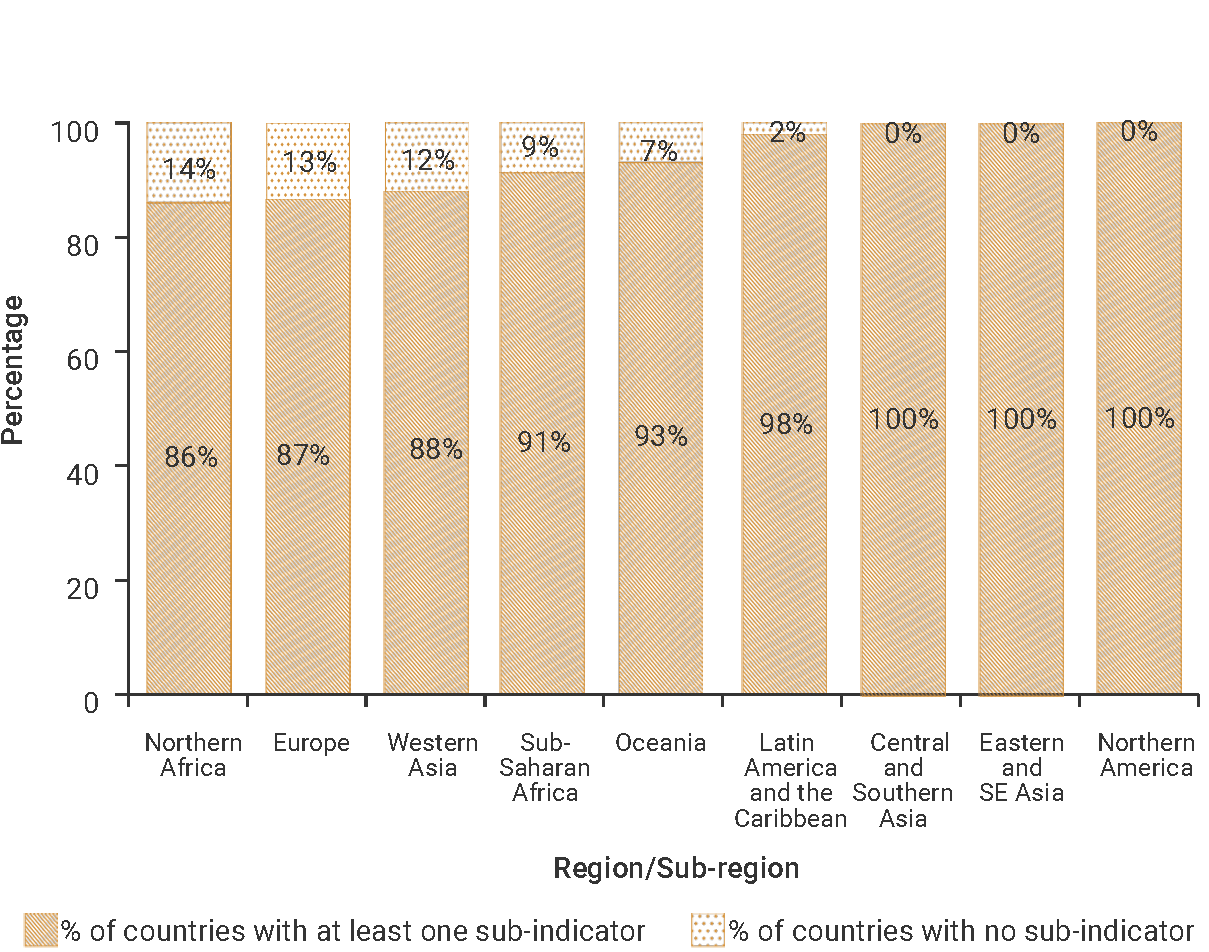SDG Indicator 14.5.1: Coverage of protected areas in relation to marine areas
1. Key features and metadata
Definition: This indicator measures the coverage of Protected Areas (PAs) in relation to marine areas. It shows trends over time in the mean percentage of each important site for marine biodiversity that is covered by designated protected areas and Other Effective Area-based Conservation Measures (OECMs).
| Sub-indicator | Disaggregated by |
|---|---|
|
ER_MRN_MPA Average proportion of Marine Key Biodiversity Areas (KBAs) covered by Protected Areas (%) |
No current data disaggregation available. |
Sources of information:Ministries of Environment and other ministries and agencies (e.g. National Parks) responsible for the designation and maintenance of PAs, Ramsar Convention and UNESCO World Heritage Convention, and KBA consultative processes.
Related SDG Indicators: 15.1.2 (Important sites for terrestrial and freshwater biodiversity that are covered by protected areas) and 15.4.1 (Coverage by protected areas of important sites for mountain biodiversity).
2. Data availability by region, SDG Global Database, as of 02 July 2025

3. Proposed disaggregation, links to policymaking and its impact
| Proposed disaggregation | Link to policymaking | Impact |
|---|---|---|
|
By Ecosystem Type (%)(Keith et al. 2020):
Applies to:
|
The disaggregation of Marine KBAs covered by Protected Areas by ecosystem types provides an understanding about their varying diversity and ecological features. It also shows their role in the global persistence of biodiversity and related ecosystem services and the specific pressures they are facing(Protected Planet [PP] 2024). It contributes to the identification of ecosystem types where policy interventions are needed to improve their well-being and extend their protection(International Union for Conservation of Nature [IUCN] 2012). This disaggregation is particularly relevant in the context of the post-2020 Global Biodiversity Framework (GBF)(CBD 2022). |
This disaggregation by ecosystem types helps to monitor the implementation of Marine Protected Areas (MPAs) and their impact on the conservation, restoration and sustainable use of marine ecosystems, biodiversity and their services. This includes supporting life on earth, elemental cycling, regulating the climate, the provision of natural resources (e.g. food, wood, materials, substances, and energy) as well as the reduction of poverty. By increasing knowledge on the composition of MPAs, science-based and data-based management policy and planning can be better supported(UN 2022c). |
|
By Management Category(%)(IUCN 2012):
Applies to:
|
This disaggregation helps to identify the targeted policies needed to achieve effective conservation, restoration and sustainable use of marine ecosystems and their services(International Union for Conservation of Nature - World Commission on Protected Areas [IUCN-WCPA] 2018). It is also useful for assessing trends in MPA performance over time and enhancing their environmental benefits and cost-effectiveness. This disaggregation is relevant in the context of the Kunming-Montreal Global Biodiversity Framework (GBF), Target 3: Conserve 30% of Land, Waters and Seas(CBD 2022). |
Improving the management of MPAs not only helps to preserve biodiversity It also provides valuable social and economic benefits. Including supporting local livelihoods, maintaining fisheries, hosting genetic resources, supporting recreation and tourism activities, contributing to science, research, education, cultural and other non-material values (OECD 2017). This disaggregation is useful for understanding the governance and management regime (i.e. institutional framework, participatory processes, incentives,marine spatial planning and other ecosystem-based approaches) through the legal status information it provides as well as available financial and human resources and the range of stakeholders involved (UNEP 2019b). |

